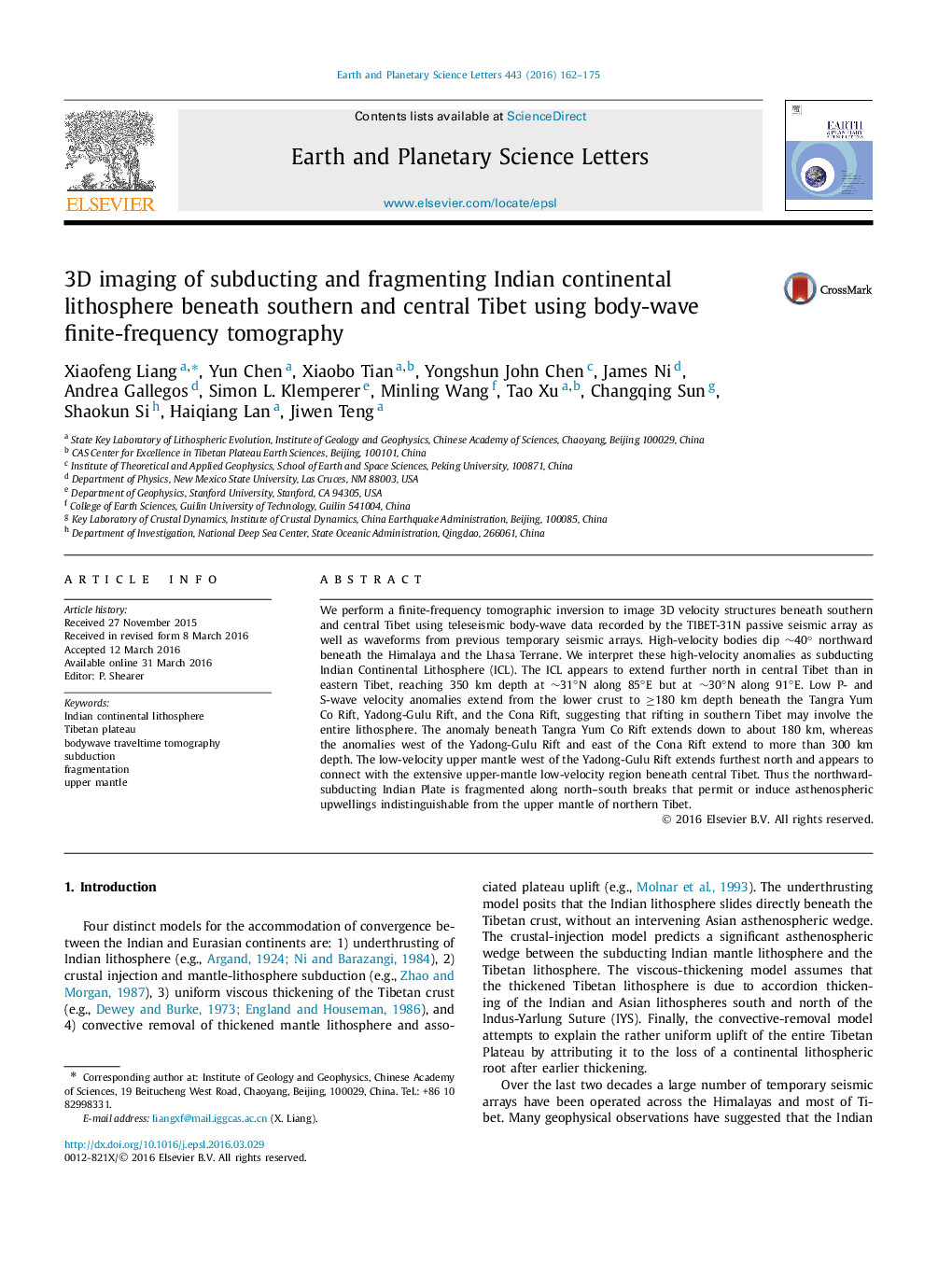| Article ID | Journal | Published Year | Pages | File Type |
|---|---|---|---|---|
| 6427440 | Earth and Planetary Science Letters | 2016 | 14 Pages |
â¢Continuous high velocities with a northward dipping angle are observed beneath southern Tibet.â¢Low velocity anomalies extend into upper mantle, suggesting fragmentation of Indian lithosphere.â¢One low velocity body extends further north and connects with hot asthenosphere of central Tibet.
We perform a finite-frequency tomographic inversion to image 3D velocity structures beneath southern and central Tibet using teleseismic body-wave data recorded by the TIBET-31N passive seismic array as well as waveforms from previous temporary seismic arrays. High-velocity bodies dip â¼40° northward beneath the Himalaya and the Lhasa Terrane. We interpret these high-velocity anomalies as subducting Indian Continental Lithosphere (ICL). The ICL appears to extend further north in central Tibet than in eastern Tibet, reaching 350 km depth at â¼31°N along 85°E but at â¼30°N along 91°E. Low P- and S-wave velocity anomalies extend from the lower crust to â¥180 km depth beneath the Tangra Yum Co Rift, Yadong-Gulu Rift, and the Cona Rift, suggesting that rifting in southern Tibet may involve the entire lithosphere. The anomaly beneath Tangra Yum Co Rift extends down to about 180 km, whereas the anomalies west of the Yadong-Gulu Rift and east of the Cona Rift extend to more than 300 km depth. The low-velocity upper mantle west of the Yadong-Gulu Rift extends furthest north and appears to connect with the extensive upper-mantle low-velocity region beneath central Tibet. Thus the northward-subducting Indian Plate is fragmented along north-south breaks that permit or induce asthenospheric upwellings indistinguishable from the upper mantle of northern Tibet.
Graphical abstractDownload high-res image (95KB)Download full-size image
